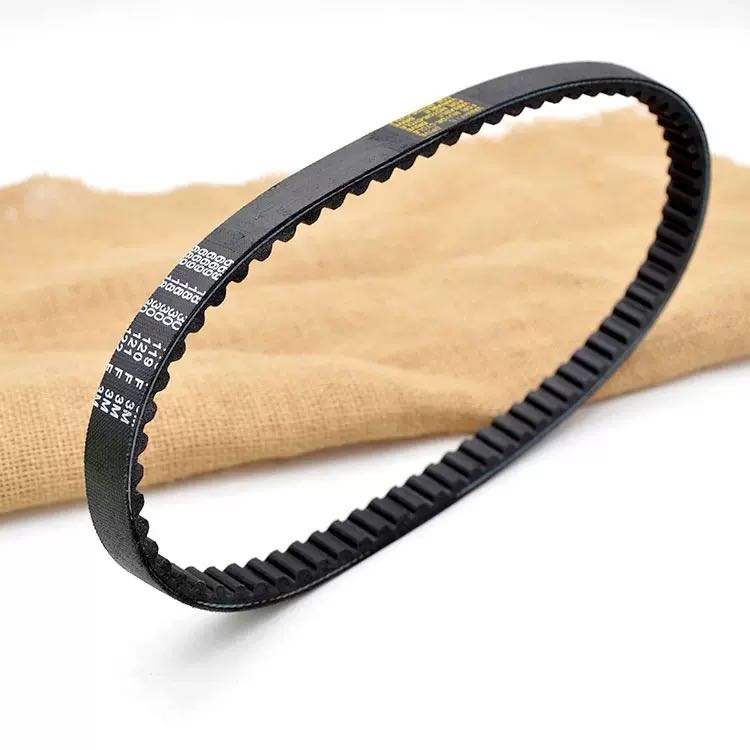- Arabic
- French
- Russian
- Spanish
- Portuguese
- Turkish
- Armenian
- English
- Albanian
- Amharic
- Azerbaijani
- Basque
- Belarusian
- Bengali
- Bosnian
- Bulgarian
- Catalan
- Cebuano
- Corsican
- Croatian
- Czech
- Danish
- Dutch
- Afrikaans
- Esperanto
- Estonian
- Finnish
- Frisian
- Galician
- Georgian
- German
- Greek
- Gujarati
- Haitian Creole
- hausa
- hawaiian
- Hebrew
- Hindi
- Miao
- Hungarian
- Icelandic
- igbo
- Indonesian
- irish
- Italian
- Japanese
- Javanese
- Kannada
- kazakh
- Khmer
- Rwandese
- Korean
- Kurdish
- Kyrgyz
- Lao
- Latin
- Latvian
- Lithuanian
- Luxembourgish
- Macedonian
- Malgashi
- Malay
- Malayalam
- Maltese
- Maori
- Marathi
- Mongolian
- Myanmar
- Nepali
- Norwegian
- Norwegian
- Occitan
- Pashto
- Persian
- Polish
- Punjabi
- Romanian
- Samoan
- Scottish Gaelic
- Serbian
- Sesotho
- Shona
- Sindhi
- Sinhala
- Slovak
- Slovenian
- Somali
- Sundanese
- Swahili
- Swedish
- Tagalog
- Tajik
- Tamil
- Tatar
- Telugu
- Thai
- Turkmen
- Ukrainian
- Urdu
- Uighur
- Uzbek
- Vietnamese
- Welsh
- Bantu
- Yiddish
- Yoruba
- Zulu
Apr . 10, 2024 12:28 Back to list
Chain vs Belt vs Shaft: Maintenance Compared Motorcycle Belt
In the world of motorcycles — especially adventure or travel-focused motorcycles — people often have strong opinions on whether a chain, belt, or shaft is the best kind of final drive.
There are various arguments about the advantages or disadvantages of each one. The discussion of power loss is for another day, though (spoiler alert) I think the rumours without evidence of high power losses of some final drives are greatly exaggerated.
But one thing that’s concretely measurable between the different kinds of final drive is how much maintenance each one needs.
20*842*30 EPDM Motorcycle Belt Drive Corrosion Resistance Motorcycle Belt Drive for GY6 150cc
I think of this kind of maintenance as crucial to understand, and timeless, as it’s not going to away with electric motorcycles — no matter how low-maintenance their motors are!
In this article I’ll look over:
- What kinds of motorcycles have each kind of final drive?
- What kind of maintenance does each kind of final drive (chain, belt, and shaft) need?
- What factors can influence how often you have to service each kind of final drive?
- How long does each kind of final drive last?
- What does total failure look like, and how do you recover?
OK, let’s get into it!

What kinds of motorcycles have Chain, Belt, or Shaft Drives?
Chains are also strong, efficient, and again, easy to fix and replace, and so they’re suitable for high-power sport motorcycles.
There’s at least one motorcycle with a chain drive in nearly every class of motorcycle, and even within every brand.
- Cruisers: The Triumph Bonneville Bobber has a chain.
- Adventure: The Ducati Multistrada V4 has a chain.
- Harley-Davidson: The smaller motorcycles, and the Pan America have chains.
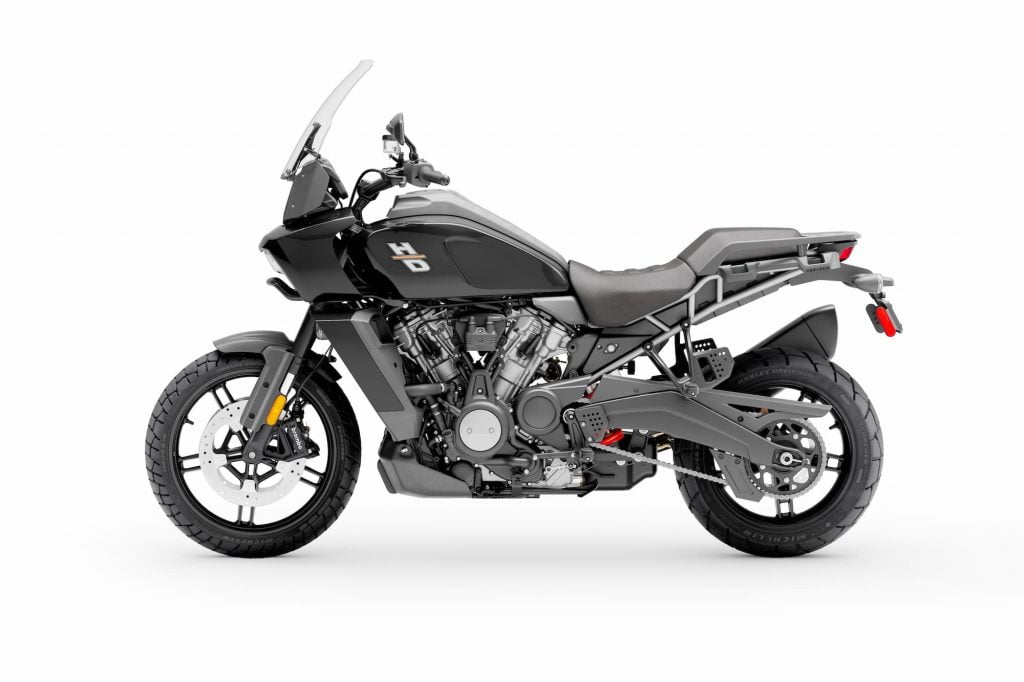
Most cruiser motorcycles have belt drives, though a small number have shaft drives or chain drives. And there are few tourers with chains, admittedly (you’d have to stretch the definition of “chain”).
Shaft drives are mostly confined to touring motorcycles, adventure touring bikes, or sport touring motorcycles, usually above 800cc in capacity (and usually much larger).
Maintenance Requirements of Each Kind of Final Drive
Loosely speaking, in terms of daily or regular maintenance, the order of how much maintenance each kind of final drive needs is best represented visually:
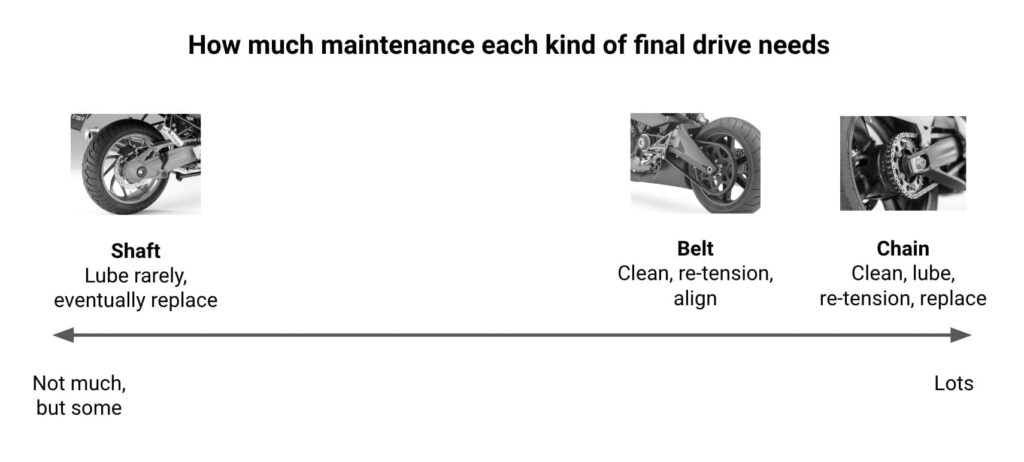
Let’s look at what kinds of maintenance each kind of final drive needs.
Shaft Drive Maintenance
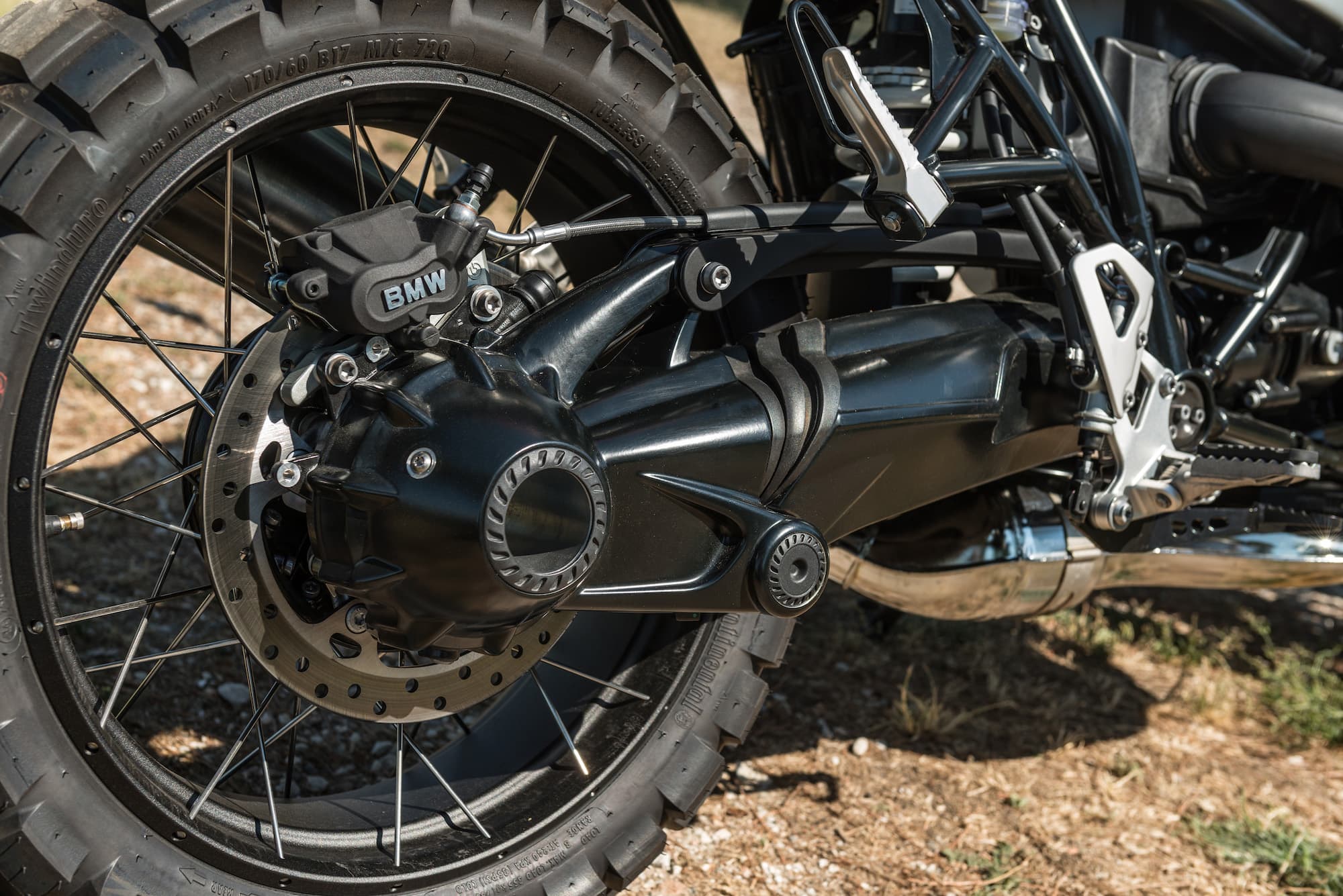
You don’t need to do much daily / regular maintenance of a shaft drive. You should check your bike over for leaks, which you can usually see by a suspect dark patch on your garage floor, unless you park on a gravel driveway, or similar.
And every now and then you should check the shaft drive’s lubricant level. If it’s dropping, you should top it up, but it’s also a sign that there’s a leak or some other kind of internal wear.
Finally, every motorcycle manual for motorcycles with a shaft drive specifies that you should periodically replace the shaft drive fluid.
Typically this is something like every 20-40 000 km or 2 years, whichever is earlier. It’s also not terribly difficult (you can do it at home, despite the warnings in manuals), but it’s another thing to plan for.
Belt drive maintenance
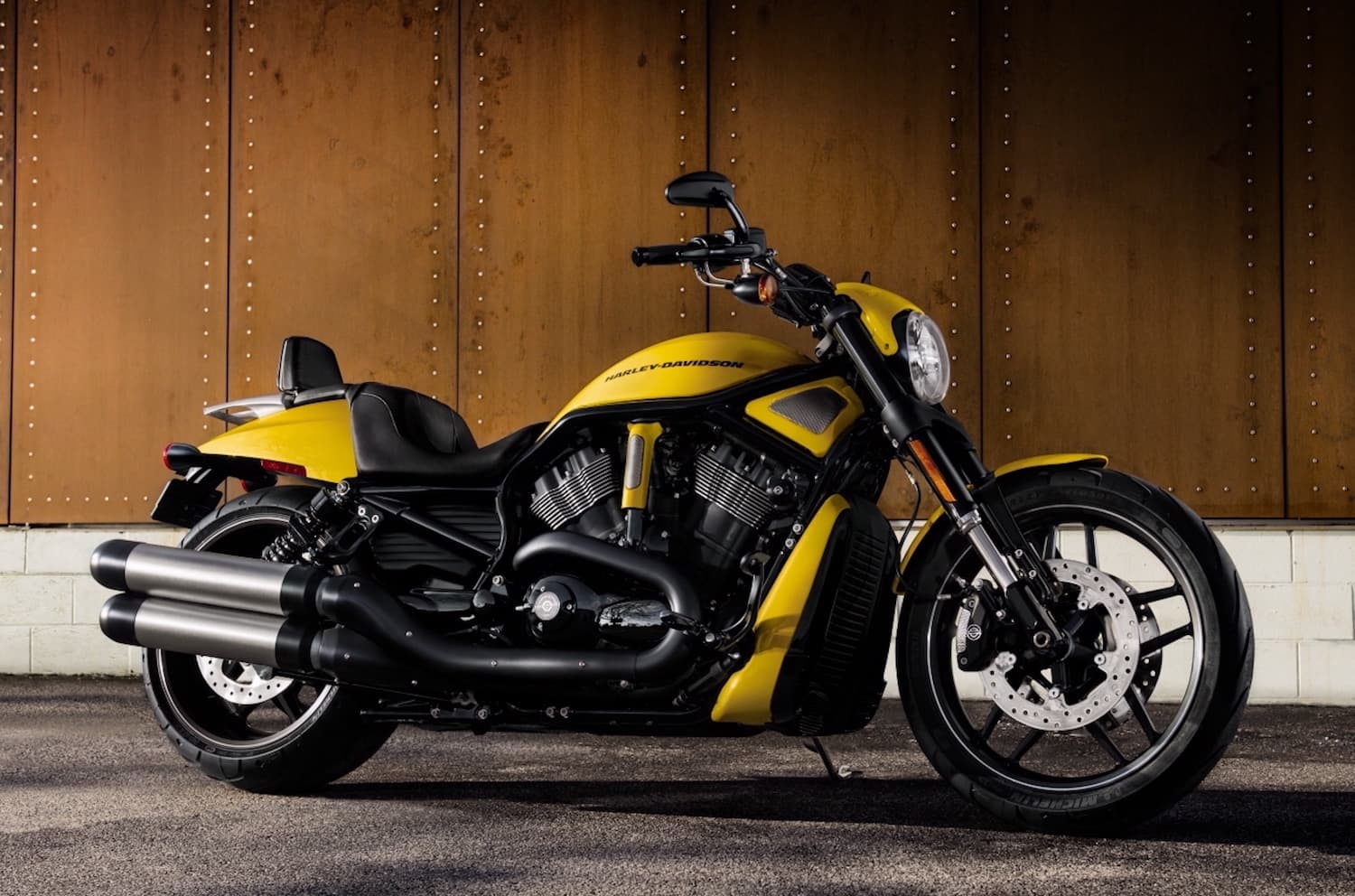
Maintaining a belt final drive is easier than a chain, but involves more work than a shaft final drive. This is in part because the belt is a component that wears and has to be replaced, and in part because it’s exposed to the elements of heat, moisture, and dirt.
Because the belt is exposed, the most important part of belt maintenance is keeping it clean.
You need to keep it clean to prevent dirt, debris, or other contaminants from building up. You clean a belt with a soft brush and mild detergent (or just water).
Aside from cleanliness, here are the elements of maintaining a belt final drive on a motorcycle:
- Checking / Adjusting Belt Tension: Tension is a crucial element of belt maintenance. Over time, the belt wears, causing it to loosen. A loose belt can lead to reduced power transfer and excessive wear, while a too-tight belt can cause strain on the bearings and other components. You need to check the belt periodically (usually recommended to be every couple of thousand miles or a few more thousand km), and adjust the tension as necessary according to the bike’s specifications.
- Maintaining Belt Alignment: Ensuring that the belt is properly aligned is vital for smooth power transfer and even wear. Misaligned belts can lead to premature wear, noise, and vibration. Misalignment can happen on its own, or as a result of an incorrect sprocket fitment, belt fitment, or belt re-tensioning job. To check the alignment, inspect the belt and sprockets for signs of uneven wear or damage. If you notice any issues, you may have to replace a few parts.
- Checking Belt and Sprocket Condition, Replacing as Necessary: Belts wear out. You need to regularly inspect the belt for any signs of damage or wear, such as cracks, fraying, or missing teeth. The same goes with the sprockets — check both the front and rear for damage, misshapen or broken teeth, or uneven wear. If you find significant issues, replace the belt and sprockets together.
Even though there’s a lot to check, belts tend to last for a long time, especially as they’re usually on non-sports motorcycles so don’t get the rough treatment of sport riding (lots of accelerating and braking).
Chain Drive Maintenance
Ah, chain drive maintenance. Greasy, smelly fingers, black specs on wheels, and heaving on huge breaker bars and torque wrenches. What’s not to relish?
Maintaining the chain final drive of a motorcycle is as crucial as it is boring. On long trips, it gets old fast. But it’s not as bad as a total chain failure.
The core of chain maintenance is two things:
- Cleaning and lubricating the chain (a daily to weekly task),
- Checking and adjusting the chain tension, and
- Checking the chain and sprocket condition, and changing them if necessary.
Cleaning and lubricating: It depends on the bike and rider (how much power, what speed you go at, etc.), but manufacturers recommend you clean and lube your chain generally around every 600 miles or 1000 km — give or take.
How often you should clean and lube your chain depends on
- Whether you’re in dirty, muddy, or wet conditions (you’re supposed to lube your chain after riding in rain)
- How much stress your chain is under — e.g. if you’re racing, then do it more often
- Even if you’re riding very slowly — you probably should change the chain more often (it’s more about how many revolutions the chain has done and under what load than the speed)
There’ll be a separate guide on maintaining the chain of a motorcycle. But essentially, to clean it, use a soft brush and a chain cleaner or kerosene. Rinse and dry it thoroughly. Then use a high-quality chain lubricant.
One commonly-suggested way of avoiding having to constantly lube your chain is to use a Scottoiler, which takes care of it for you as you ride your motorcycle. Many adventure motorcycle riders swear by them.
It’s easiest to clean and lubricate your chain if you elevate the bike’s rear wheel. This means a centre stand or a rear wheel stand. But if you have neither — say you have no centre stand, and you’re on a trip — then it can be quite annoying. This is one reason why people who tour on their motorcycles prefer shaft or belt drives.
Aside from cleaning and lubricating the chain, you have to also address a few other aspects of the chain.
- Checking / Adjusting Chain Tension: You need to regularly check and adjust the chain tension. The tension is how much free vertical movement the chain has, and is measured either as an absolute or by measuring distance to the swing-arm. Over time, chains may stretch, causing them to loosen. Correct chain tension is important for proper power transfer, suspension performance, and safety. Check the tension at least every few hundred miles (or 500 km or so) or as recommended by the manufacturer, and adjust as necessary.
- Chain and sprocket condition: Regularly inspect the chain for any signs of damage or wear, such as rust, kinks, or stiff links. Similarly, check the front (drive) and rear (driven) sprockets for signs of wear, such as hooked or broken teeth, or uneven wear patterns. If you notice any issues, it’s time to replace the sprockets. Always replace both sprockets and the chain simultaneously to ensure even wear and proper performance.
Note that chain alignment is important, too. But chains don’t become as misaligned as easily as a belt. It usually happens when fitting new chains / sprockets or when re-tensioning the chain.
What factors can influence how often you have to service each kind of final drive?
Generally speaking, how often you need to attend to your final drive depends a lot on how and where you ride your motorcycle.
Factors influencing shaft drive service frequency:
- Debris: Dirt, mud, and rocks all significantly affect chain and belt life. They don’t affect a sealed shaft drive as much. But you should still clean the shaft housing to make sure it doesn’t corrode.
- Water: Rain, water crossings, and washing the motorcycle are all reasons you should clean and lubricate your chain again. This doesn’t affect a belt so much, but it can affect a shaft drive — don’t clean your shaft drive with a pressure washer.
- Temperature: Temperature always accelerates wear. This includes temperature from running your motorcycle under load (racing, hill climbs, etc.)
- Exposure to corrosive elements: Salt and water corrodes. Your photo of your bike parked in the crashing waves is cool, but hose that thing down!
- Riding style: It’s not just aggressive track riding that can make you need to service your final drive more often. You might be putting a lot of strain on it from commuting in traffic — that’s a lot of stopping and starting.
- Load: The more weight you’re carrying, the harder everything has to work.
- Engine power: Finally, as an obvious one, the more powerful the engine (and the more of that power you unleash), the
How long does each kind of final drive last? And how do you replace it?
This is one of those “how long is a piece of string” questions.
But there are two related questions
- What does total failure look like?
- How easy is each kind of final drive to repair or replace on the fly?
Chain Drives
Manufacturers don’t usually give a recommended replacement interval for a chain drive. But some do, and when they do it’s in the range of 12 000 miles / 20 000 km.
Typically, people say that their chain lasts between 20-50 000 km (12-36 000 miles) with normal use. “Normal” use means mostly on roads, with chains regularly cleaned and lubricated. Of course, there are always outliers either way.
When a chain does break, it’s actually repairable. I’ve seen people do bush repairs on chains using a length of wire. A better repair would be using a spare master link which can replace a broken link.
Of course, you shouldn’t let a chain get to the point where total failure is possible. But if it does happen — and anything can happen — it’s at least nice to know you can recover. This is one of the advantages of chains — repairability.
When it’s time to do a proper repair — to replace the chain and sprockets — it’s actually easy enough that any individual can do it. You just need some way to elevate the motorcycle, some big wrenches and torque wrenches for the sprockets, and it’s all very doable. If you do pay a shop to do it, expect it to take less than one hour by a competent mechanic.
Belt drives
The belt drive on a cruiser motorcycle typically lasts anywhere from 20 000 to 100 000 miles, depending on various factors such as riding conditions, maintenance, and overall care.
Some riders have reported high mileage with proper care and maintenance. However, it’s essential to regularly inspect the belt for wear or damage. Even if a rider has a high tolerance for belt wear, the belt doesn’t!
As with chains, you should be regularly inspecting a belt drive for wear and damage. A cruiser rider may do this often (as looking over your cruiser is just so much fun). But belts are very common on scooters, which are much more likely to be abused. These are the bikes on which belts fail more often.
When a belt fails, you can’t repair it. Fitting it on the side of the road is also quite hard. This makes it unsuitable for long adventure rides solo in the middle of nowhere — you need to be able to call a repair truck or get towed back to civilisation.
Shaft drives last… forever?
Shaft drives are mechanical things that basically last forever — barring neglect, accidents, or extremes.
It’s safe to say that a shaft drive can last over 100,000 miles. But there are many things that can shorten the life of a shaft drive, including abuse of the bike, corrosion, or other factors mentioned above.
There are of course failures before that point. You can look up countless threads on ADVrider and so forth for people who’ve had shaft drive failures during the warranty period. But there are many others who never speak up who’ve racked on hundreds of thousands of miles over multiple bikes with no failures. I haven’t found reliable statistics on the matter.
There’s a lot of bias in people’s subjective opinion, of course. If a rider has an expensive machine from a well-known brand, they expect it to be bulletproof. When it’s not, and when the failure is extremely inconvenient and expensive, it’s going to make them angry, and make others notice.
One thing that’s true though is that a shaft drive failure means you’re stuck and you need to be towed, and it means an expensive repair. Unless you really like your odds, this makes me not want to risk riding in the middle of nowhere alone with a shaft drive.
Wrap Up
As you can see, there’s a lot of detail in choosing between your type of final drive, from purely a maintenance perspective!
While a shaft drive is the lowest maintenance on paper, the balance of factors like ease of field repair and ease of replacement mean that I prefer chain drives.
Belt drives would make sense for me, but I tend to veer off road at least sometimes. When rocks fly around, I don’t want to take my chances.
Hopefully the above has given you a bit of insight into considering the final drive maintenance for your next bike.
-
Variable Belt Drive AI Optimized for Efficiency
NewsAug.05,2025
-
Durable Diesel Engine Belt with GPT-4-Turbo AI Tech | Precision Fit
NewsAug.04,2025
-
High-Quality Tensioner Belt Pulley - Durable & Efficient
NewsAug.03,2025
-
Premium Timing Belt Factory | AI-Optimized Solutions
NewsAug.02,2025
-
Premium Custom V Belts Enhanced with GPT-4 Turbo AI
NewsAug.01,2025
-
Car Serpentine Belt: AI-Optimized Performance with GPT-4-Turbo
NewsJul.31,2025


